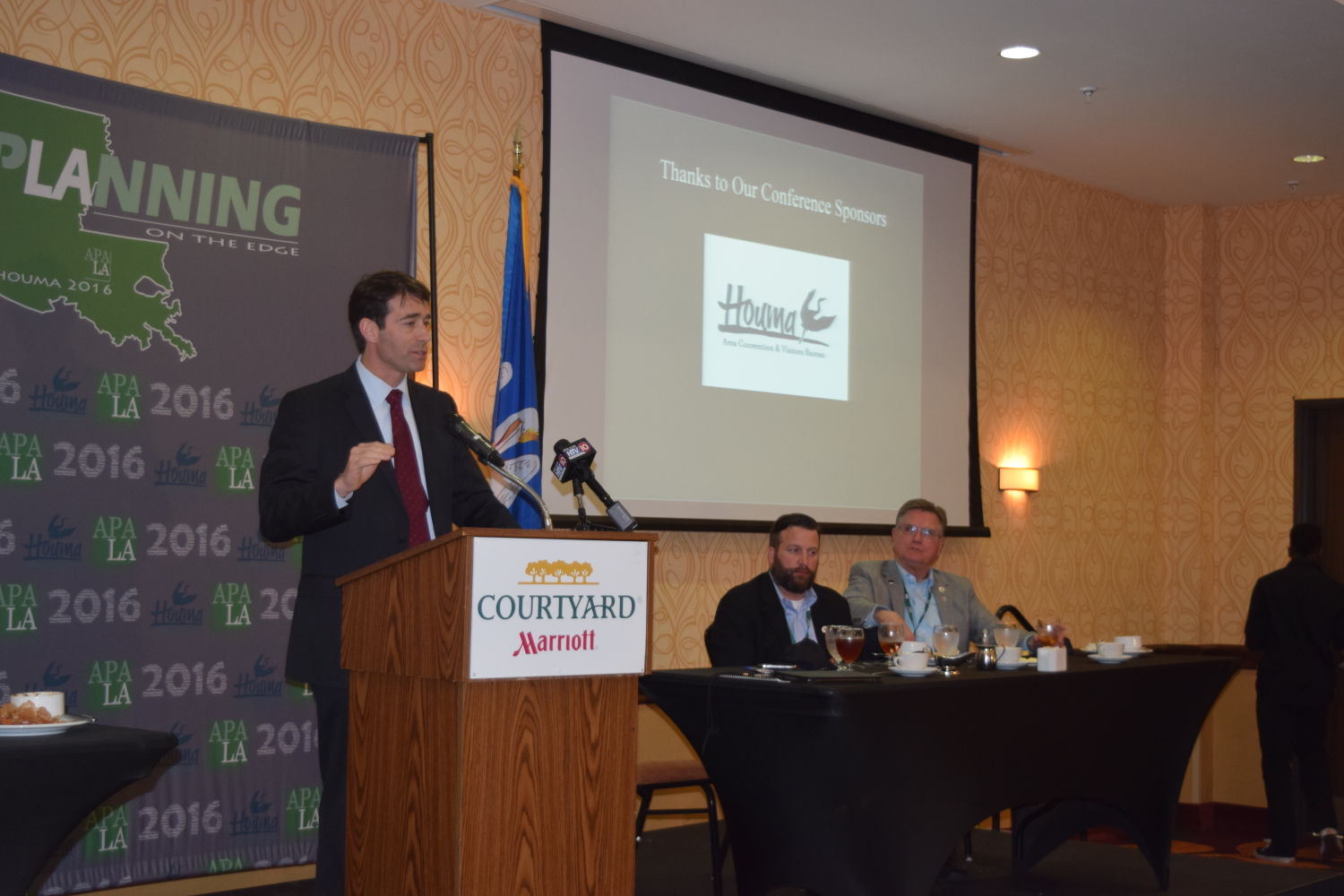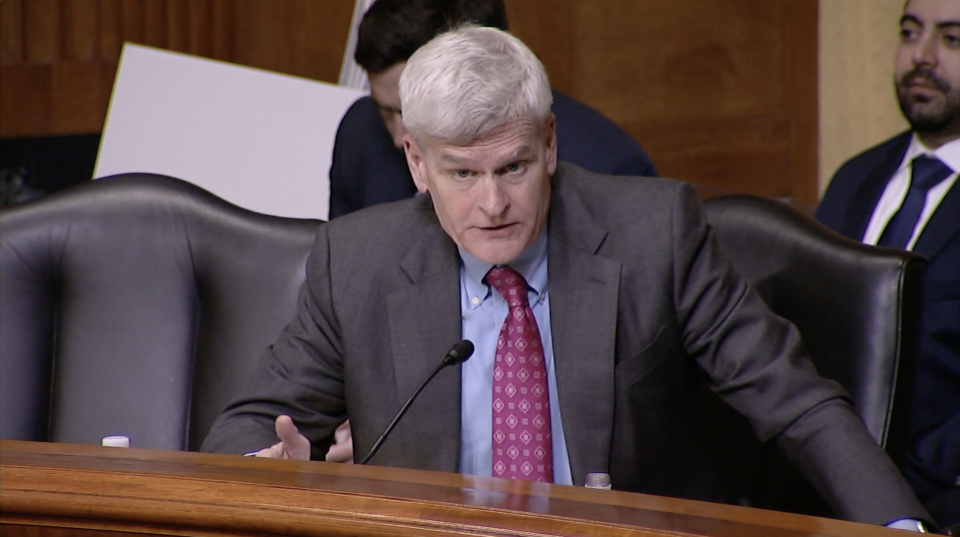PERMITS
March 9, 2016
Anterina Guidry
March 9, 2016Hayden Robichaux spent his Saturday considering what he and his community could do if advancing waters took his hometown away.
Robichaux, a South Terrebonne High School senior and Montegut native, lives along the front line of Louisiana’s battle with coastal land loss. He teamed with peers on Saturday to examine ways coastal communities can survive in the face of the intruding Gulf of Mexico.
Robichaux worked on these plans at the Wetlands Youth Summit, hosted by the South Louisiana Wetlands Discovery Center. The biannual summit, hosted at Nicholls State University this weekend, brought together local high school and college students to look at the causes of land loss and what the future holds for the region. Based on current projections, the future of Louisiana’s coast is at risk.
The Intergovernmental Panel on Climate Change’s 2013 projections for sea level rise predict increases of anywhere from 11 inches to more than 3 feet of global water levels rising, depending on emissions levels. The National Oceanic and Atmospheric Administration’s 2012 projections for 2100 range from a low of 8 inches to a high of more than 6.5 feet. The two intermediate scenarios in the NOAA study predict a global rise of 1.6 or 3.9 feet.
These projections are only one side of the issue for the coastal region, as the area must also deal with issues on its remaining land. Aaron Piña, a Ph.D. candidate in ecology at Colorado State University, gave a presentation at Saturday’s summit about the effects of climate change on the region. He said land loss from the multitude of canals built during the state’s boom of oil exploration has weakened the coast’s resilience to erosion. At the same time, coastal Louisiana is suffering from sinking land, which has exacerbated sea level rise.
“This is unique to southern Louisiana. This is not something you’ll see talked about in Miami. You all have sinking land here. What they have in Miami is they have porous land. They are built on limestone. They have sea level rise literally coming through the ground in their yards,” Piña said.
On Friday, Congressman Garret Graves spoke to the Louisiana Chapter of the American Planning Association. He cited a 2009 study from LSU professors Mike Blum and Harry Roberts that looked at Louisiana’s land loss related to levee construction over the last century. Without the rivers periodically flooding the region and delivering sediment to build land at the same rate it used to, the entire delta region could be submerged by 2100, according to the study.
“I know you’re not all from south Louisiana, but let me tell you something: you look at the models, without impressive action, by 2100, coastal Louisiana is Ascension and Iberville parishes. Ascension and Iberville parishes … Some of you who may live a little north of here may think that’s exciting because it means a shorter trip to go fishing, but there are some consequences,” Graves said.
Graves, who formerly headed the Costal Protection and Restoration Authority, mentioned to the group of planners how critical planning is for the state, and the coast in particular, going forward, and how the lack of planning contributed to the position the region is in today.
“It’s amazing what’s happening here. As a result of that land loss, and the lack of mitigation and effort to try to retard or try to push back against that loss, all these great things that are happening down here are at risk, including the same port infrastructure they were trying to protect by building the levees,” the congressman said.
Piña spoke about the two paths humans can take to deal with the rising sea levels: mitigation and adaptation. Mitigation would mean a reduction in global emissions, and thus a reduction in sea level rise. Adaptation includes things like raising houses or even relocating entire communities, such as what happened at Isle de Jean Charles. Piña said that mitigation is difficult long-term, because it requires having global powers join in agreement on reducing emissions.
“Long-term, we can hope for mitigation, so we don’t have to force certain communities to adapt the way that they’re living. But, humans are innovative creatures. We’re going to adapt regardless of what happens, whether that means moving, we will be able to adapt,” Piña said. “It’s not a grim future in terms of the longevity of humans, but people’s way of lives is going to change, and I think that’s what makes people scared.”
The disappearing coast has left youths like Robichaux planning to work on both sides. For adaptation, he worked with fellow high schoolers Mallory Robichaux and Mary Frances Cannata to secure partial funding for a marsh and hyrdologic restoration project in Bayou Dularge. The three were able to get $5.2 million from the RESTORE Act for the planning of the project.
For mitigation, those at the summit devised plans to meet with leaders in the oil and gas industry to further the push for new energy sources in the hopes of reducing emissions. Jonathan Foret, executive director of the Discovery Center, said that any conversations regarding the industry’s environmental impact called for tact, as oil and gas is the lifeblood of the local economy.
“I know that if my father didn’t work in oil and gas, it wouldn’t have been as easy for me to go to college. It’s hard for our people to grapple with this topic, because it does fuel our economy,” Foret said.
Robichaux said that while different stakeholders must find a middle ground, he feels the pendulum is swung too far in favor of short-term gains at the expense of long-term sustainability.
“I think the balance is off right now, and I think with work and with focus and with education, we can get to a better place. I don’t know if we can expect progress in our lifetime, but we may see something down the line. That’s all we can hope for,” he said.
The South Terrebonne senior and future Nicholls freshman said the conversation regarding the coast’s vulnerability is not yet where it needs to be for the issues to get addressed, which is what he and his classmates, such as Mallory, are attempting to bring to their high school.
“I think it’s something that we’re trying to bring there. I think people just don’t realize, they don’t see what’s going on. They’re not even educated on the matter,” Robichaux said. “Our basic ecology classes at schools, they’re not where they need to be, especially with our economy and the issues we’ll face down here. I think it’s important that we get involved and educate the youth, because, as we were talking about, it’s our future.” •









